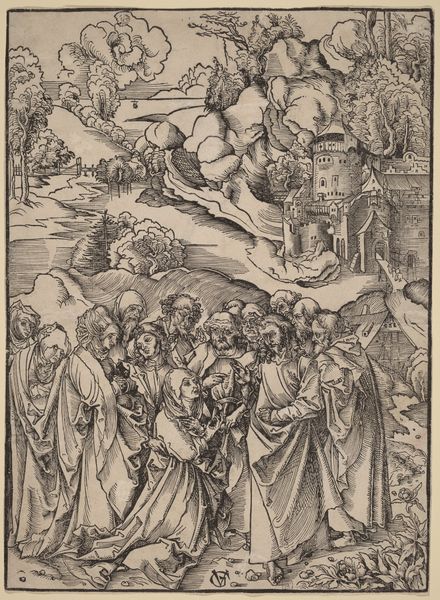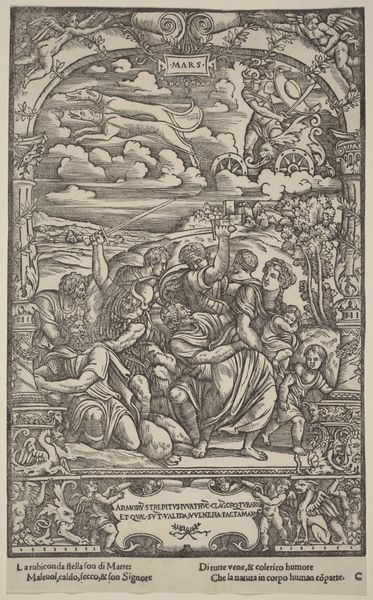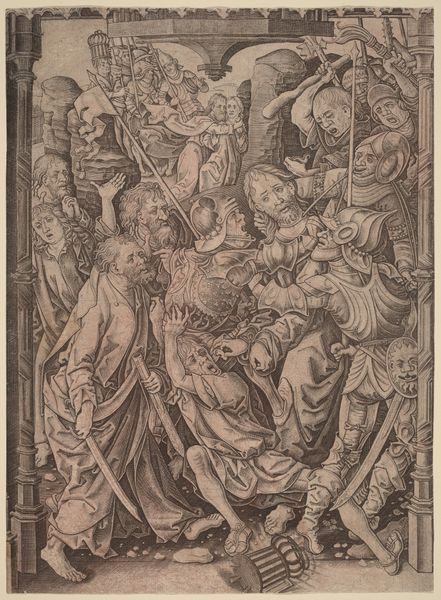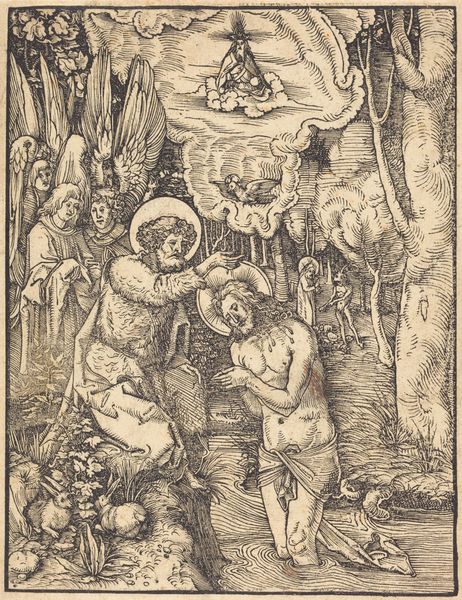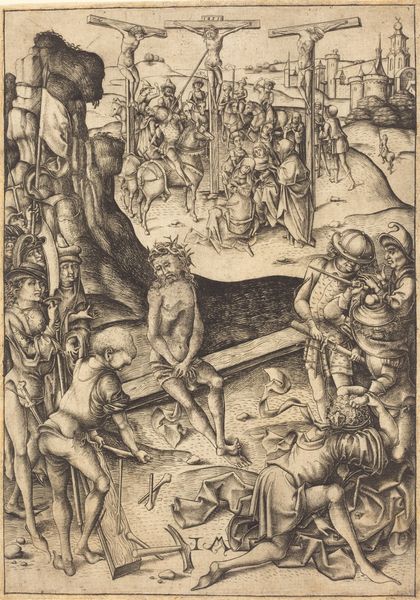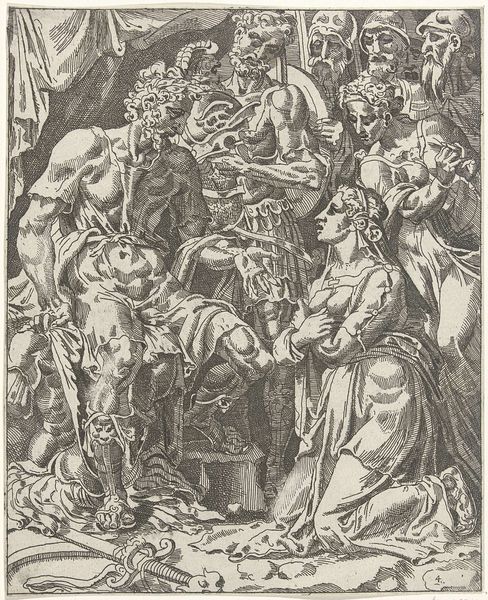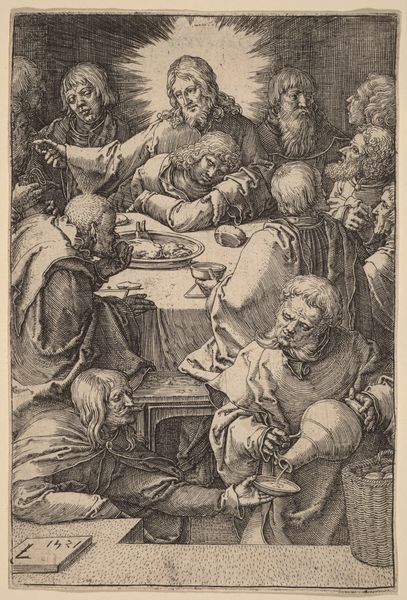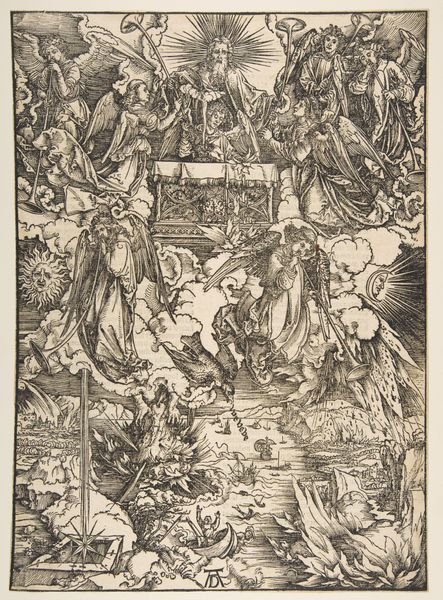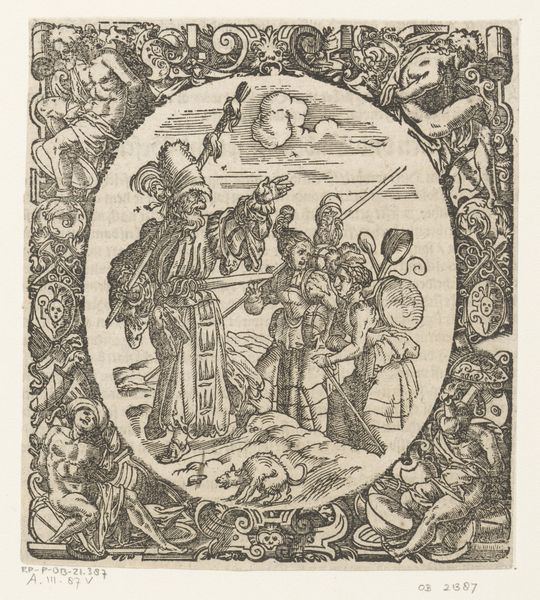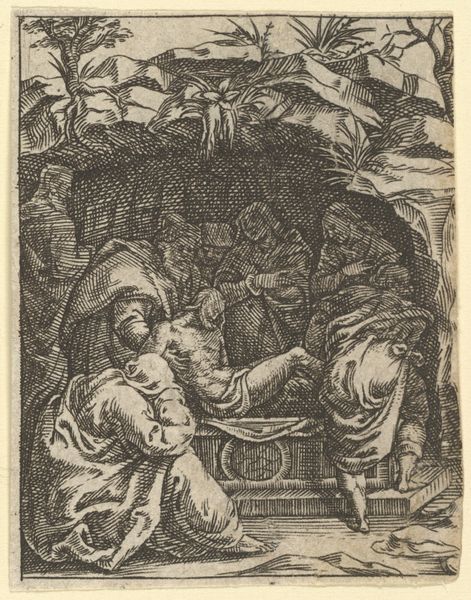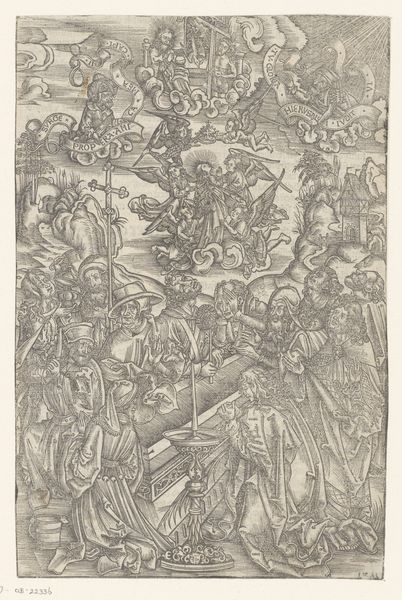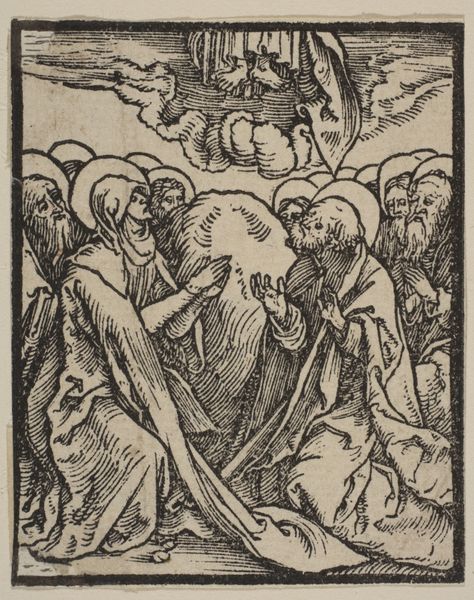
Frederick the Wise of Saxony Adoring St Bartholomew 1503 - 1514
0:00
0:00
drawing, print, engraving
#
drawing
# print
#
figuration
#
northern-renaissance
#
engraving
Dimensions: Sheet: 7 1/4 × 5 7/8 in. (18.4 × 15 cm)
Copyright: Public Domain
Curator: Looking at Lucas Cranach the Elder's engraving, dating from between 1503 and 1514, titled *Frederick the Wise of Saxony Adoring St Bartholomew*, now housed at the Metropolitan Museum of Art, what’s your first reaction? Editor: It feels crowded, almost suffocatingly so. There’s so much visual information packed into this relatively small space, with a strong sense of contrasting darkness and light, all rendered meticulously with engraving. Curator: The engraving, as a medium, lends itself to detailed symbolism. St. Bartholomew, with his association to skinning, emerges in the center, surrounded by a host of angels. Note Frederick's likeness in the lower right. Editor: Yes, I noticed the intensity in Frederick's gaze. It feels staged somehow, an exercise in political theatre as much as religious devotion. The whole scene almost reminds me of a play being performed. Curator: Cranach was deeply embedded in the Saxon court; this image tells a powerful story of faith and authority, intended for the eyes of a specific and influential audience, but beyond Frederick, what readings do you extract from the angels and other figures present? Editor: Well, they are standard Northern Renaissance fare, chubby cherubs that hint towards divine acceptance and serenity while also subtly justifying Frederick's actions as divinely sanctioned. Is the snake another one of Bartholomew's signs? Curator: Yes, snakes recur regularly in Christian iconography as signifiers of fallenness and spiritual struggle, a representation that speaks to a potent tradition. How fascinating to think that this print disseminated this specific image, strengthening Frederick's authority. Editor: It’s almost propaganda then, veiled under religious guise. The detail, the layers... everything carefully orchestrated to project power and piety simultaneously, revealing much about art's social and political function. Curator: I agree. Through this engraving, one gets a rich sense of not just religious belief but of the very careful construction of identity, legacy, and the political landscape within the Saxon court. Editor: Exactly. It shows that imagery is a cultural instrument that shapes behavior and the worldviews of patrons like Frederick and how even a seemingly simple artwork carries such potent socio-political currents.
Comments
No comments
Be the first to comment and join the conversation on the ultimate creative platform.
